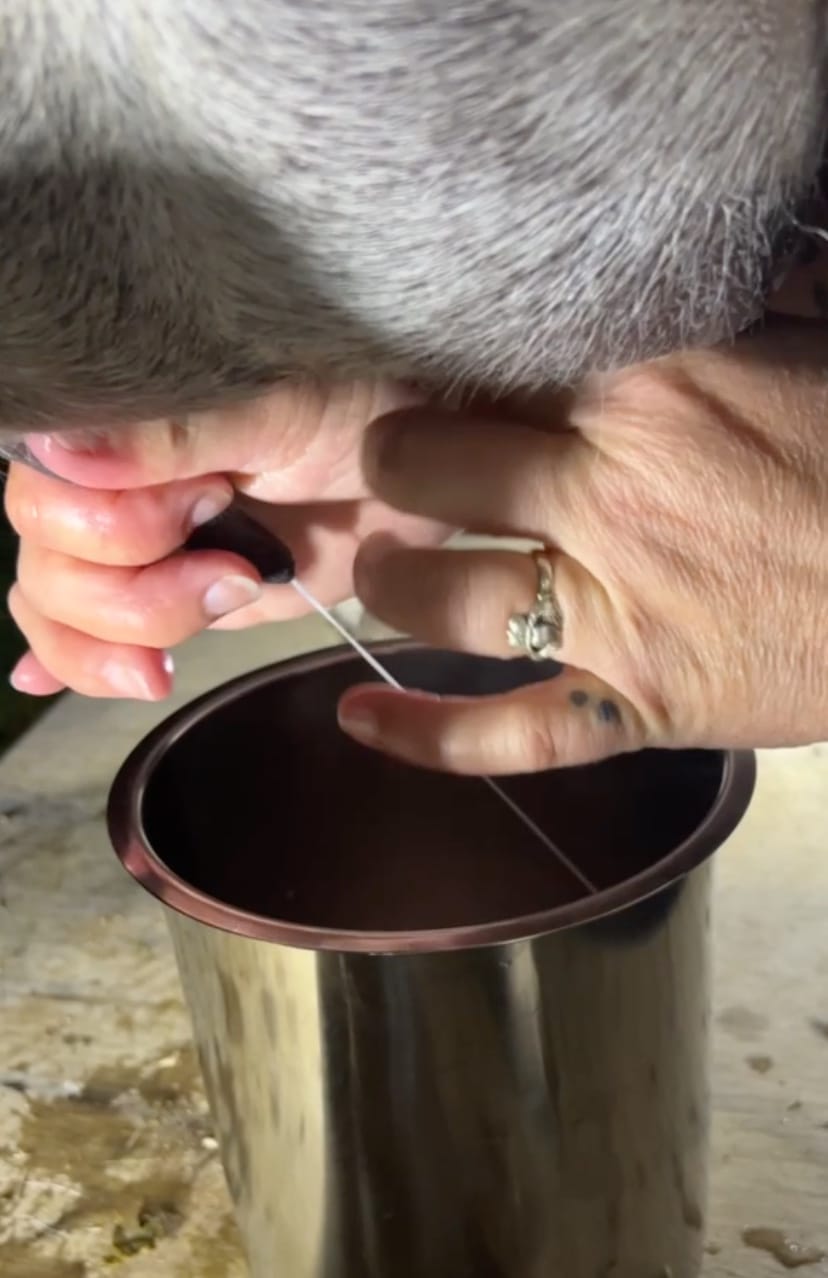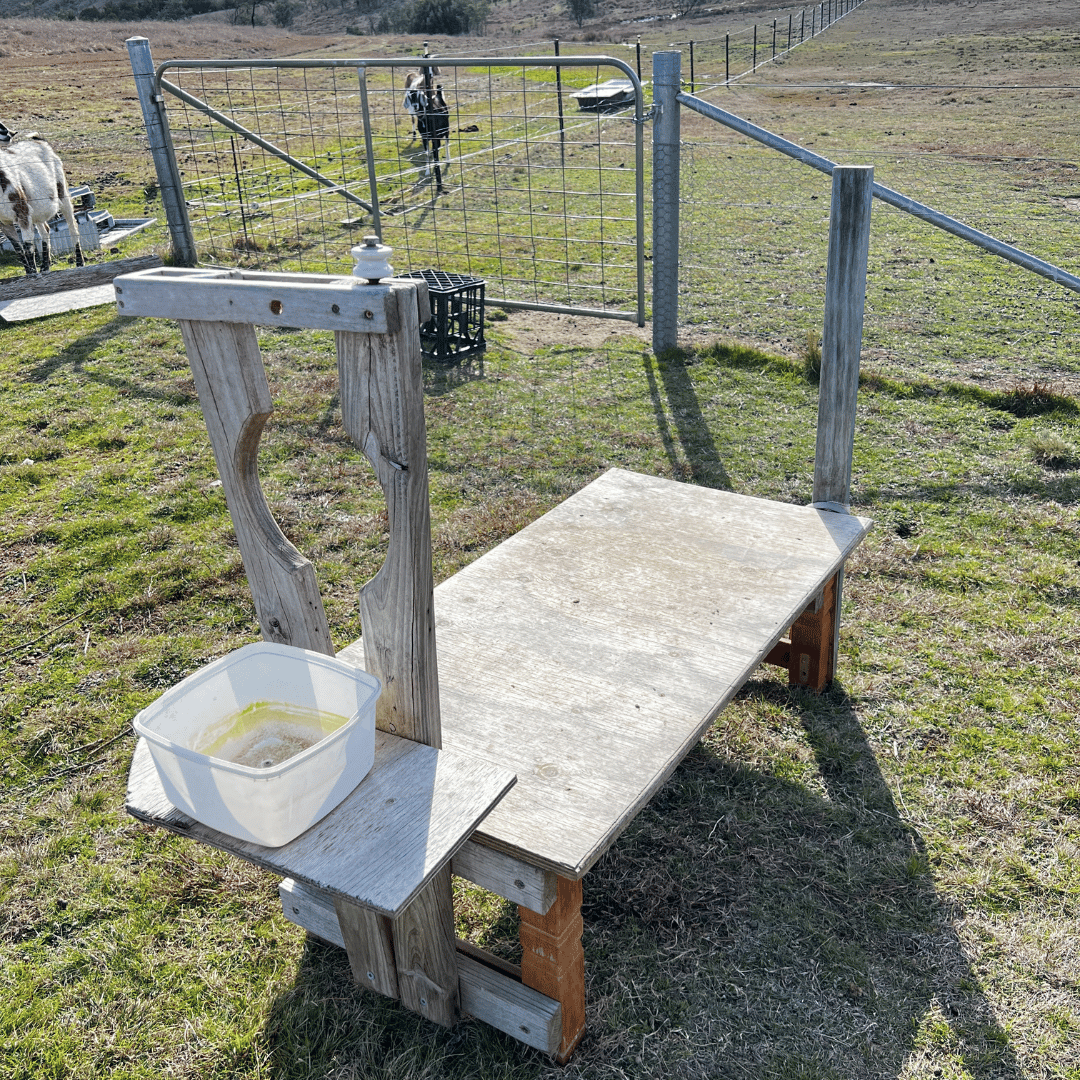
How to Milk a Goat
Essential Tips and Tricks for First-Time Goat Keepers
So, you've decided to embrace the homesteading lifestyle and add goats to your backyard farm. Exciting times!
But now comes the real challenge—learning how to milk a goat.
Whether you're dreaming of fresh goat milk in your morning coffee or aiming to make your own cheese, mastering this skill is key.
In this guide, we'll walk you through the essential tips and tricks to make your first milking experience smooth and successful.
Let's get started on your goat-keeping journey! For a visual demonstration, check out this helpful video on milking goats.
Getting Started: Preparing for Milking

Before you start milking your goats, there are a few important steps to take. Let's break them down:
Training Your Goat for Milking
Getting your goat comfortable with the milking process is crucial.
Start by introducing your goat to the milking stand well before you need to milk her. Offer treats and positive reinforcement to create a pleasant association with the stand.
Begin by gently touching and massaging the udder area. This helps your goat get used to being handled. Practice the motions of milking without actually extracting milk.
Patience is key here - some goats adapt quickly, while others may take more time.
Remember, consistency is vital.
Try to stick to a regular schedule, as goats thrive on routine. With time and practice, your goat will become more comfortable with the process.
Essential Equipment for Milking Goats
To milk your goats effectively, you'll need a few key items.
First, invest in a sturdy milking stand. This keeps your goat in place and at a comfortable height for milking. You don't need to go crazy here, we made one out of an old coffee table. See the picture below.
You'll also need clean, food-grade buckets for collecting milk. Stainless steel is ideal as it's easy to sanitize. Ensure the bucket is all one piece, it cannot have seams where milk could collect.
Don't forget udder wipes or clean cloths for cleaning before milking. I buy the huge Chux rolls.
A strainer and cheesecloth are essential for filtering the milk after collection.
Lastly, have glass jars ready for storing your fresh milk. I get them from Ikea.
For a complete list of milking supplies, check out this helpful guide.

Establishing a Milking Routine
Creating a consistent milking routine is crucial for both you and your goats.
Aim to milk at the same times each day, typically 12 hours apart if you're milking twice daily.
Start by cleaning the udder with warm water and a clean cloth. This not only keeps things hygienic but also stimulates milk let-down.
Follow with a gentle massage of the udder.
After milking, consider using a teat dip to prevent bacteria from entering the teat.
Always end your routine on a positive note, perhaps with a treat, to reinforce good behavior.
The Milking Process: Step-by-Step Guide

Now that you're prepared, let's dive into the actual milking process:
Proper Technique for Hand Milking
Hand milking might feel awkward at first, but with practice, you'll develop a rhythm.
Here's how to do it:
Wrap your thumb and forefinger around the top of the teat, close to the udder.
Squeeze these fingers together, trapping the milk in the teat.
Progressively squeeze your other fingers from top to bottom, pushing the milk out.
Release all fingers and repeat.
Remember, pull down and squeeze, don't yank. Be gentle but firm. It might take some time to get the hang of it, but you'll improve with practice.
For a detailed breakdown of the technique, check out this Reddit thread with tips from experienced goat keepers.
Tips for Calming Fidgety Goats
Some goats can be restless during milking, especially when they're new to the process.
Here are some tips to keep your goat calm:
• Provide food during milking as a distraction.
• Speak softly and calmly to your goat.
• Maintain a consistent routine to build familiarity.
• Use gentle touches and reassuring pats.
If your goat is particularly fidgety, consider having someone hold her back legs.
With time and patience, most goats will settle into the milking routine.
Maintaining Cleanliness and Hygiene
Cleanliness is crucial when milking goats. Always start with clean hands and equipment. Wash the udder with warm water before milking to remove any dirt or bacteria.
After milking, clean all your equipment thoroughly. Use hot, soapy water and rinse well. Some folks use a diluted bleach solution for extra sanitation. I sometimes use Milton.
Store your milk in clean, sealed containers and refrigerate promptly. For more detailed hygiene tips, check out this guide from MannaPro.
Milking goats can seem daunting at first, but with practice and patience, you'll soon be a pro.
Remember, every goat is different, so don't get discouraged if things don't go perfectly right away.
Keep at it, and you'll soon be enjoying fresh, homegrown goat milk as part of your homesteading journey. Happy milking!
BY MOJO HOMESTEAD











